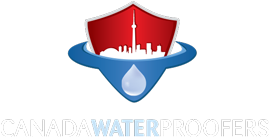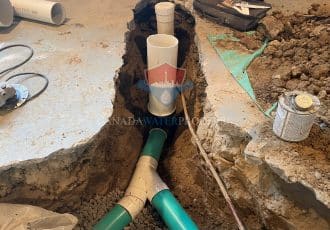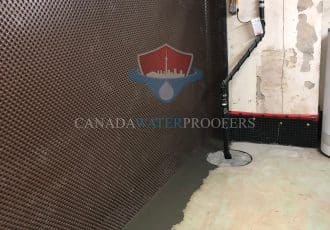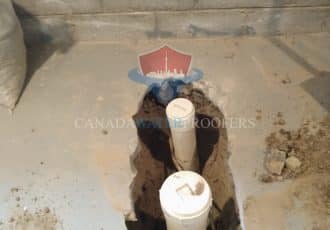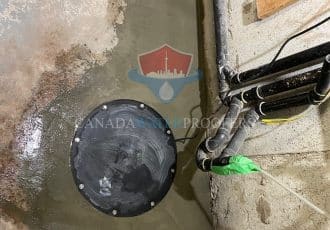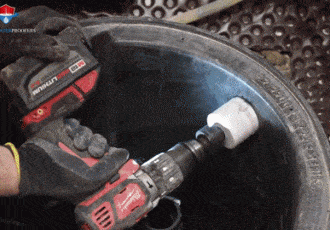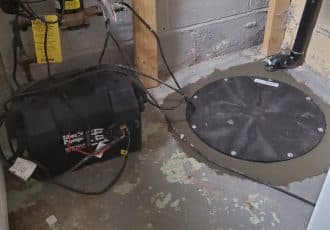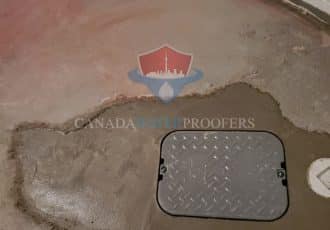In Toronto, the city offers owners of single-family, duplex and triplex residential homes a subsidy of up to $3,400 per property for the installation of flood protection. Devices include a sump pump, backwater valve, and severance and capping of a home’s storm sewer or external weeping tile connection (which means the disconnection of the weeping tile pipe from the city’s sewer).
There is a good reason for this. Basement flooding is a common problem for homeowners. With climate change and more substantial rainfall, it’s becoming more common. Too often, waterproofing companies are brought in after the fact – after a flood, sewer back-up, or water damage. Homeowners are then out thousands of dollars to clean everything up, not to mention personal possessions, essential documents and moments that are damaged or lost forever.
We are hearing a lot about how budgets are being stretched at all levels of government. In Toronto, the city manages one of the largest water and wastewater systems in North America – all day, all night, all year. This management ensures that over 3.6 million people and businesses in Toronto, and portions of York and Peel, have access to safe, clean drinking water.
CITY SEWER ARE AGING
Stormwater collection is one of the things they do. They will tell you about the budget challenges – according to Toronto’s 2019 budget there is currently $1.491 billion in backlogged, infrastructure repair needs. Significant money is required to eliminate the backlog by 2028. A big concern is the resiliency of the city against incidents of extreme weather, to manage basement flooding and other stormwater issues across the city.
In the budget, around $3.4 billion (25 percent) of the city’s recommended 10-year capital plan will be allocated to projects that will improve the city’s resiliency to extreme weather events. There are thousands of kilometres of water mains and storm and sewer lines across Toronto. In recent years, sudden, heavy storms have overwhelmed the system and many areas of the city became mini lakes.
BACKWATER VALVES PROVIDE IMPORTANT INSURANCE
So for homeowners, pro-action is key. You can’t count on city hall to protect what for many of us will be the most significant investment we will make in our lifetimes. That’s why the city’s subsidy program is in place.
And that’s why you need a backwater valve installed in your home. What is it?
The backwater valve is a device with a flap that opens to allow water from sinks, toilets, showers or tubs to exit the home, into the municipal system. That flap (which has a flotation device) will close if there is backflow from the city’s sewer pipes, back into your basement.
The flap will remain closed as long as there is pressure from the water and sewage backflow. Any homeowner who has faced a sewage backup through the home’s plumbing will attest to how unpleasant that situation is.
There is also a clear cover so the homeowner can see if the device is operating properly, manually adjust the flap if need be, and to ensure it isn’t clogged by sewage. It’s an insurance device if the city’s drainage has broken down.
It will take a day to install a backwater valve. Get a qualified plumber to inspect it regularly. In Toronto, the city will pay you 80 percent of the invoiced cost of a backwater valve up to a maximum of $1,250, including materials, labour, permit and taxes. It doesn’t matter how many devices are installed on the property. (Same with sump pumps – 80 percent of the invoiced cost up to a maximum of $1,750.)
PROTECTING YOUR HOME FROM FLOODING
In the end, it’s all about investing in an inter-connected waterproofing system throughout the home that breaks any reliance on a 100 percent efficient city sewer, at a time when politicians and staff are admitting there is a backlog of important infrastructure upgrades they can’t get to because of funding shortfalls. Other cities have similar challenges and similar subsidy programs in place as well.
Backwater valves are one thing you can do. Disconnecting weeping tiles from the city’s sewer connection, and connecting it instead to a sump pump system that will pump water out of your basement and foundation area to an outside location, is another thing you can do.
So is disconnecting your eavestrough’s downspout from the sanitary sewer, and extending it several feet from the home, so water can leave. You should also grade the soil next to the walls of the home on a downward slope, so water doesn’t build up next to the foundation.
These are all important things you can do to keep your home dry.
